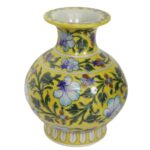Introduction
Choosing the right canvas is essential for any oil painter, as it can greatly influence the artwork’s appearance and longevity. With various canvas options available, from cotton to linen to synthetic materials, understanding their characteristics and suitability for oil painting can help artists make informed decisions. This blog will delve into the different types of canvases, their features, and how to select the best one for your artistic endeavors.
Types of Canvas
1. Cotton Canvas
Cotton canvas is one of the most widely used materials for oil painting, especially among beginners and hobbyists.
- Characteristics:
- Affordability: Cotton canvases are generally less expensive than linen, making them accessible for artists on a budget.
- Lightweight: Easy to handle and transport, cotton canvas is ideal for outdoor painting (plein air).
- Texture Variety: Available in multiple textures, from smooth to rough, allowing artists to choose a surface that suits their style.
2. Linen Canvas
Linen canvas is often regarded as the premier choice for oil painting, preferred by many professional artists for its durability and quality.
- Characteristics:
- Durability: Linen is stronger and more resistant to wear and tear than cotton, ensuring longevity.
- Fine Texture: Typically has a finer, smoother surface that allows for detailed work and subtle blending of colors.
- Archival Quality: Known for its ability to maintain the integrity of artworks over time, making it a favorite for serious artists.
3. Synthetic Canvas
Synthetic canvases, usually made from polyester, are becoming increasingly popular for their unique properties.
- Characteristics:
- Water Resistance: Synthetic canvases are moisture-resistant, reducing the risk of mold and decay.
- Stability: They are less likely to stretch or warp compared to natural fibers, providing a consistent painting surface.
- Texture Options: Available in various textures, they can mimic both cotton and linen surfaces, offering versatility.
Pre-Stretched vs. Canvas Rolls
Pre-Stretched Canvases
Pre-stretched canvases come ready to use, mounted on a wooden frame and primed for painting.
- Advantages:
- Convenience: Ideal for beginners or artists who want to start painting immediately, eliminating preparation time.
- Uniformity: Provides a consistent surface, ensuring a similar texture and tension across multiple canvases.
Canvas Rolls
Canvas rolls allow artists to customize their canvas dimensions according to specific project requirements.
- Advantages:
- Flexibility: Artists can cut the canvas to any size, perfect for unique dimensions or large-scale works.
- Cost-Effectiveness: Often more economical for artists needing multiple canvases or larger pieces.
Preparing Your Canvas
Proper preparation of the canvas is crucial to achieving optimal results in oil painting.
- Priming: Most canvases come pre-primed with an acrylic gesso, which provides a suitable base for oil paints. For unprimed canvases or additional layers, applying an oil-based primer or gesso enhances adhesion.
- Stretching: If using a canvas roll, stretching it tightly on a wooden frame prevents sagging and ensures a smooth painting surface.
- Tension: Ensuring the canvas is taut is important; loose canvases can lead to uneven paint application and unwanted textures.
Conclusion
Selecting the right canvas for oil painting is fundamental to achieving your artistic vision. Whether you choose cotton, linen, or synthetic canvas, understanding the characteristics of each will help you make an informed decision. Consider factors such as durability, texture, and your painting style when selecting your canvas.
If you have any questions or need further guidance on choosing or preparing a canvas for oil painting, feel free to reach out! We’d love to assist you in your artistic journey. Contact us at [your contact information] and let’s create something beautiful together!






